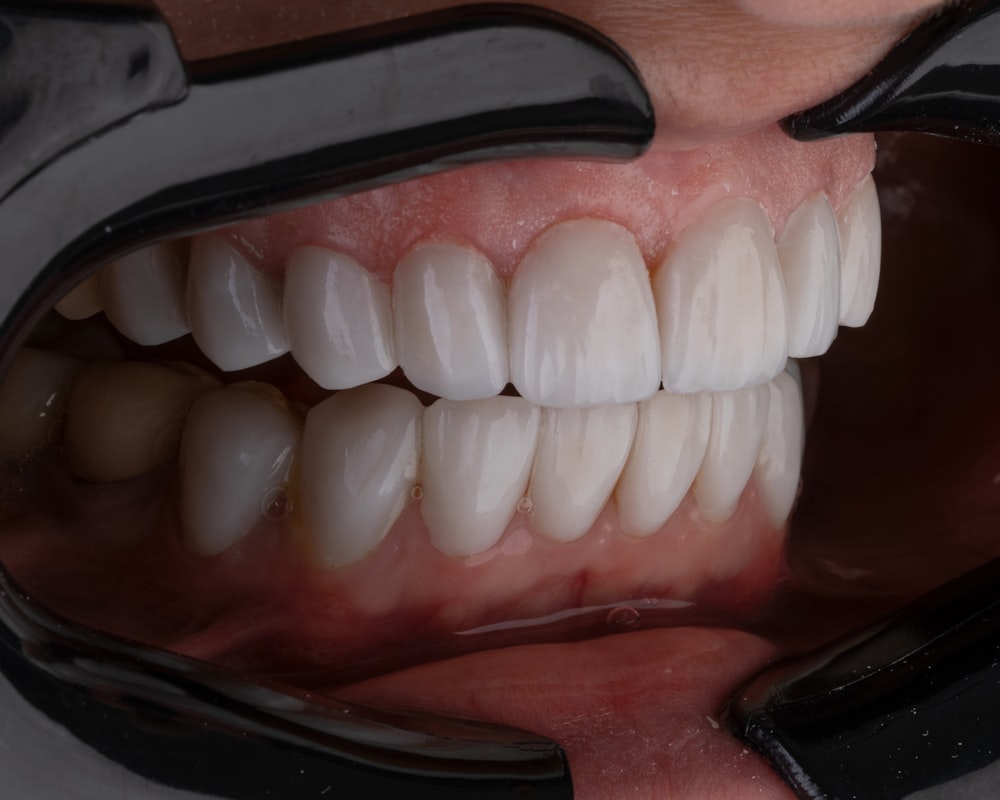Navigating Recovery Tooth Extraction Care Instructions
Navigating Tooth Extraction Aftercare: Essential Tips for a Smooth Recovery
Understanding Tooth Extraction: A Brief Overview
Tooth extraction is a common dental procedure performed for various reasons, including severe decay, infection, or crowding. While the procedure itself may be relatively quick and straightforward, proper aftercare is essential for promoting healing and preventing complications. Let’s explore some essential tips for navigating tooth extraction aftercare to ensure a smooth recovery process.
Immediate Post-Extraction Care: What to Expect
Following the tooth extraction procedure, it’s normal to experience some discomfort, swelling, and bleeding around the extraction site. Your dentist will provide you with specific post-operative instructions to follow, which may include:
- Applying gentle pressure with gauze to control bleeding.
- Using ice packs to reduce swelling and discomfort.
- Avoiding vigorous rinsing or touching the extraction site with your tongue or fingers.
These initial steps are crucial for minimizing pain and promoting the initial stages of healing.
Managing Discomfort: Tips for Pain Relief
It’s common to experience some degree of discomfort or pain after tooth extraction, especially in the first few days. Over-the-counter pain medications, such as ibuprofen or acetaminophen, can help alleviate pain and reduce inflammation. Be sure to follow your dentist’s recommendations regarding medication dosage and frequency to ensure safe and effective pain relief.
Maintaining Oral Hygiene: Gentle Care for Healing
While it’s essential to keep the extraction site clean to prevent infection, it’s equally important to avoid disturbing the blood clot that forms in the socket, as this can delay healing and lead to a painful condition known as dry socket. Your dentist may recommend gently rinsing your mouth with saltwater or a prescribed mouthwash to keep the area clean without disrupting the clot. Avoid brushing or flossing around the extraction site for the first few days, and be mindful of any food particles that may accumulate in the area.
Dietary Considerations: Choosing Soft Foods
In the days following tooth extraction, it’s best to stick to a soft or liquid diet to avoid placing undue pressure on the extraction site. Opt for nutritious foods that are easy to chew and swallow, such as yogurt, smoothies, soups, mashed potatoes, and scrambled eggs. Avoid hard, crunchy, or sticky foods that can irritate the extraction site or become lodged in the socket.
Monitoring Healing: Signs of Complications
While some degree of discomfort and swelling is normal after tooth extraction, certain symptoms may indicate a complication that requires prompt attention. Be on the lookout for signs such as:
- Severe or worsening pain that is not relieved by medication.
- Excessive bleeding or oozing from the extraction site.
- Persistent swelling or inflammation that worsens over time.
- Foul odor or taste coming from the extraction site.
- Fever or chills, which may indicate an infection.
If you experience any of these symptoms, contact your dentist immediately for further evaluation and appropriate treatment.
Follow-Up Care: Scheduled Check-Ups
Your dentist will schedule a follow-up appointment to monitor your healing progress and ensure that no complications have arisen. During this visit, they will examine
Coping with Mouth Sores Practical Tips for Daily Life
Understanding Mouth Sores: Exploring Causes, Treatments, and Prevention
Introduction:
Mouth sores, those pesky little annoyances that seem to pop up at the most inconvenient times, can range from mildly irritating to downright painful. While they’re a common affliction, understanding their causes, knowing how to treat them effectively, and learning how to prevent their recurrence can significantly improve your quality of life.
Causes of Mouth Sores:
Mouth sores can be triggered by a variety of factors, including physical trauma such as accidentally biting the inside of your cheek or lip. They can also result from chemical irritants found in certain foods and beverages, particularly those that are acidic or spicy. Additionally, viral infections like herpes simplex virus (HSV) can cause cold sores, while bacterial infections can lead to more serious oral ulcers. Even hormonal changes and stress have been linked to the development of mouth sores in some individuals.
Types of Mouth Sores:
Not all mouth sores are created equal. There are several distinct types, each with its own unique characteristics and causes. Canker sores, for example, are small, shallow ulcers that typically develop on the inside of the mouth, while cold sores, also known as fever blisters, tend to appear on the lips or around the mouth. Other common types of mouth sores include traumatic ulcers, which result from physical injury, and oral thrush, a fungal infection caused by Candida albicans.
Symptoms and Diagnosis:
The symptoms of mouth sores can vary depending on the underlying cause and type of lesion. However, common signs include pain or discomfort, redness and inflammation, and in some cases, the presence of fluid-filled blisters. Diagnosing the specific type of mouth sore often involves a thorough examination by a healthcare professional, who may also recommend additional tests or procedures to rule out other potential causes.
Treatment Options:
Fortunately, there are numerous treatment options available for managing mouth sores and alleviating associated symptoms. Over-the-counter topical ointments and gels containing ingredients like benzocaine or hydrogen peroxide can provide temporary relief from pain and promote healing. For more severe or recurrent cases, prescription medications such as corticosteroids or antiviral drugs may be necessary. In some instances, laser therapy or other advanced procedures may be recommended to accelerate healing and reduce discomfort.
Home Remedies and Self-Care Tips:
In addition to medical interventions, there are several home remedies and self-care strategies that can help ease the pain and discomfort of mouth sores. Rinsing your mouth with a saltwater solution or baking soda mixture can help reduce inflammation and promote healing. Avoiding spicy, acidic, or abrasive foods can also prevent further irritation, while maintaining good oral hygiene practices, such as brushing and flossing regularly, can help prevent infection and promote overall oral health.
Preventing Recurrence:
While it’s not always possible to prevent mouth sores entirely, there are steps you can take to reduce their frequency and severity. Avoiding known triggers, such as certain foods or stressful situations, can help minimize the risk of outbreaks. Practicing good oral hygiene and avoiding tobacco products
Mastering Chiropractic Techniques for Optimal Spinal Health

Mastering Chiropractic Techniques for Optimal Spinal Health
Chiropractic care is a holistic approach to health that focuses on the relationship between the spine and the nervous system. Through specialized techniques, chiropractors aim to optimize spinal health, leading to improved overall well-being.
Understanding the Core Principles of Chiropractic Care
Chiropractic care operates on the principle that proper alignment of the spine is crucial for the body’s ability to heal itself. By ensuring that the spine is in optimal condition, chiropractors believe they can facilitate the body’s natural healing processes.
The Importance of Spinal Alignment
Chiropractic techniques primarily revolve around spinal adjustments. These adjustments, also known as spinal manipulations, involve the application of controlled force to joints, restoring proper alignment. This is believed to alleviate pain, improve function, and support the body’s ability to heal.
Addressing Pain and Discomfort
One of the key benefits of chiropractic care is its effectiveness in addressing various types of pain. Whether it’s back pain, neck pain, or headaches, chiropractic techniques are designed to target the root cause of discomfort, providing relief without relying on medications.
Tailored Treatment Plans for Individual Needs
Chiropractors create personalized treatment plans for each patient. After a thorough assessment, including X-rays and a detailed health history, chiropractic professionals design specific strategies to address the unique needs of the individual.
Holistic Approach to Wellness
Chiropractic care extends beyond merely alleviating pain. It embraces a holistic approach to wellness, acknowledging the interconnectedness of the body’s systems. By promoting spinal health, chiropractors aim to enhance overall physical and mental well-being.
Combining Chiropractic Techniques with Lifestyle Changes
Chiropractors often advise on lifestyle modifications to complement their adjustments. This may include exercises, stretches, and ergonomic recommendations to support the maintenance of spinal alignment between appointments.
Chiropractic Techniques in Sports and Performance
Athletes frequently turn to chiropractic care to enhance their performance and prevent injuries. Chiropractors employ specialized techniques to address musculoskeletal imbalances, improve flexibility, and optimize nerve function, contributing to peak athletic performance.
Managing Stress and Improving Sleep Quality
Chiropractic care is not solely focused on physical symptoms; it also addresses the impact of spinal health on mental well-being. Many patients report improvements in stress levels and sleep quality after undergoing chiropractic treatments.
Accessible Chiropractic Care Through Remote Consultations
In the digital age, chiropractic care has become more accessible through remote consultations. Individuals seeking guidance on spinal health or experiencing non-emergency issues can connect with chiropractors online at Chiropractic Techniques, making expert advice and support readily available.
In conclusion, mastering chiropractic techniques is a pathway to achieving optimal spinal health and overall well-being. Whether seeking relief from pain, improving performance, or enhancing daily life, chiropractic care offers a holistic approach to health that empowers individuals to take charge of their physical and mental vitality. Explore the possibilities of chiropractic techniques and their impact on your health journey.
Revitalizing Health: Chiropractic Intervention for Wellness

Unlocking Vitality: Exploring the Impact of Chiropractic Intervention
In the pursuit of holistic well-being, chiropractic intervention stands out as a comprehensive approach to revitalizing health. From addressing musculoskeletal issues to enhancing overall wellness, chiropractic care has gained recognition for its positive impact on the body’s natural healing abilities. Let’s delve into the world of chiropractic intervention and its transformative effects on wellness.
Understanding Chiropractic Philosophy
At the core of chiropractic intervention lies a distinctive philosophy centered on the relationship between the spine and the nervous system. Chiropractors believe that misalignments in the spine, known as subluxations, can interfere with the body’s innate ability to heal itself. Through precise adjustments, chiropractors aim to correct these misalignments, restoring balance and promoting optimal functioning of the nervous system.
Holistic Approach to Musculoskeletal Health
Chiropractic care extends beyond addressing specific ailments; it embraces a holistic approach to musculoskeletal health. Chiropractors assess the entire musculoskeletal system, considering the spine’s alignment, joint function, and the impact on surrounding muscles. This comprehensive evaluation allows for targeted interventions that not only alleviate symptoms but also address underlying issues contributing to discomfort.
Pain Management and Relief
A primary focus of chiropractic intervention is pain management and relief. Whether stemming from chronic conditions, injuries, or everyday stress, chiropractors employ various techniques, including spinal adjustments and soft tissue therapies, to alleviate pain. By targeting the root causes of pain, chiropractic care provides a natural and drug-free alternative for individuals seeking relief.
Enhancing Range of Motion and Flexibility
Chiropractic interventions play a pivotal role in enhancing range of motion and flexibility. Through adjustments and therapeutic exercises, chiropractors work to restore optimal joint function and reduce stiffness. This emphasis on improved mobility not only aids in pain reduction but also contributes to overall physical well-being and functionality.
Promoting Nervous System Health
The spine’s alignment is intricately linked to the health of the nervous system. Chiropractic care seeks to promote nervous system health by ensuring proper spinal alignment. When subluxations are corrected, the nervous system can function more efficiently, fostering better communication between the brain and the body’s organs and tissues.
Complementary Care for Various Conditions
Chiropractic intervention is not limited to musculoskeletal issues; it serves as complementary care for a variety of conditions. Individuals seeking relief from headaches, migraines, and certain neurological conditions may find chiropractic care beneficial. Chiropractors collaborate with other healthcare professionals to provide holistic support for individuals managing diverse health concerns.
Preventive Wellness and Maintenance
Beyond addressing specific health issues, chiropractic care emphasizes preventive wellness and maintenance. Regular chiropractic adjustments are not only therapeutic but also serve as a proactive measure to prevent future musculoskeletal issues. This preventive aspect aligns with the philosophy of supporting the body’s natural ability to maintain health.
Patient-Centric Care and Education
Chiropractic care is inherently patient-centric, involving active participation and education. Chiropractors work closely with patients to understand their unique health goals and concerns. Through personalized care plans and educational guidance, individuals are empowered to take an active role in their well-being, contributing to a



